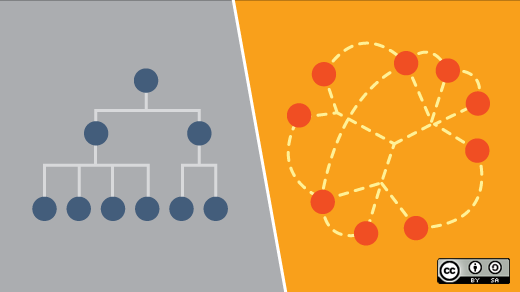To transform organizations so that they are fit for human beings--more inspiring and engaging and yet just as disciplined and even more productive--we need to understand why promising ideas for improving management developed in the 20th Century--such as teams, empowerment, delayering or innovation--failed to become a permanent part of the standard management repertoire.
The default mental model of management
This article was originally posted on the Management Innovation eXchange (MIX), an open innovation project aimed at reinventing management for the 21st century.
These improvements didn't stick because of the mental model around management should be conducted that is still remarkably pervasive in the Fortune 500. It comprises five interlocking principles.
The most important principle is that the goal of a firm is to make money for the shareholders. Second, the role of the managers is that of a controller of individuals, generally using a blend of carrots and sticks. Third, coordination of work is achieved through bureaucracy: rules, plans, reports and meetings. Fourth, the overriding value in the organization is efficiency, namely, saving money to enhance profits, often through economies of scale. Fifth, communications are top-down, telling subordinates what to do and often how to do it.

These five interlocking principles constitute an organizational culture. Single-fix improvements have difficulty enduring in this culture because they are usually incompatible with it. Improving one dimension of the culture is undermined by countervailing pressure from the other four dimensions. To achieve sustained change, we must move beyond single fixes and think in terms of systemic change.
A changed business context has caused declines in firm performance
Transforming management must also reflect the epochal change in the business environment. As Roger Martin has noted, we have moved from an age of shareholder capitalism to an age of customer capitalism. The balance of power in the marketplace has shifted from seller to buyer. Fifty years ago, big firms were in charge. Today, given the choice offered by global competition and customers' access to reliable information, along with their ability to communicate with each other, the customer is now in charge.
A new mental model of management: radical management
To deal with these issues, a new mental model of management is emerging. Its principles were developed in the software realm--beginning in the mid-1990s as "Agile and "Scrum." "Radical management" reimagines the five interlocking principles of traditional management for a new age:
- The firm's goal shifts from making money for shareholders to delighting the customer. Delighting the customer is an operational business objective, not a vague slogan. The goal is not just the responsibility of marketing: it requires that everyone in the organization focus on providing additional value to customers and delivering it sooner. By adopting this new "bottom line", the voice of the customer is injected into every decision. Every individual must contribute.
- The role of managers shifts from a controller of individuals to an enabler of self-organizing teams. Managers provide the team with a clear line of sight to the customer and are accountable for removing impediments. This shift recognizes that the engine of productivity in a knowledge economy--innovation and creativity--resides in the energy and ideas of the people doing the work, collaborating across boundaries, drawing on new technology and different perspectives.
- Coordination of work shifts from bureaucracy to dynamic linking, in which work is done in short cycles with direct feedback on finished work from customers at the end of each cycle. Dynamic linking creates a space for the team to contribute its full talents and creativity aimed at delighting customers, while also achieving disciplined execution. The specific procedures of dynamic linking have been validated in thousands of firms in the software sector over the last decade and are now robust.
- The values practiced embody a shift from a preoccupation with economic value to the embrace of a wider set of values that grow and sustain the firm, particularly radical transparency, continuous improvement and environmental sustainability. In hierarchical bureaucracies, crucial problems can lie hidden, unresolved for decades. In radical management, specific practices are put in place to ensure that performance impediments are systematically surfaced and addressed.
- Communications shift from top-down commands to horizontal, adult-to-adult conversations. In traditional management, communications have tended to be vertical, thereby killing creativity. To elicit the talents and imagination of the workforce, managers need to communicate predominantly in the language of social norms: human being to human being, using stories, metaphors and open-ended questions. Leadership storytelling has an important role to play.

A new bottom line for the firm
The most important of the five shifts is the first: a shift in the bottom line of the firm from making money to delighting the customer. As Ranjay Gulati notes in Reorganize For Resilience, (HBSP, 2010), succeeding in a world where the customer is in charge requires a shift from an inside-out perspective ("We make it and you take it") to an outside-in perspective ("We seek to understand your problems and will delight you by solving them"). The shift requires more than merely emphasizing customer service: it means orienting everyone and everything in the firm to understanding customers and providing more value to customer sooner.
Once a firm adopts this different bottom line, it discovers that the traditional way of managing--hierarchical bureaucracy--doesn't work. It doesn't delight anyone. It was never intended to. It was aimed at producing average outputs consistently. To achieve the new goal, the firm has to implement the other four organizational shifts: the new role for managers, new modes of coordination, new values and new ways of communicating.
Individually, none of the shifts is new. What is new is doing all five shifts together as systemic change. When only one or two of the five shifts is pursued, the change is usually undermined by conflicts with the interlocking principles of traditional management.
The gains in performance are extraordinary
The financial impact of doing all the shifts together is extraordinary. Paradoxically, when the firm focuses on delighting the customer, it makes more money than if it focused directly on making money. Compare the ten-year share price of well-known firms implementing most of the principles like Apple, Amazon, and Salesforce, with increases of ten times or more, with that of traditional stalwarts like GE, Cisco, Wal-Mart, which struggle even to maintain their share price constant.

By adopting a people-centered goal, a people-centered role for managers, a people-centered mechanism for coordinating work, people-centered values and people-centered communications, the firm is able to operate at a new level: making more money for its shareholders by delighting the people for whom the work is done while providing deep job satisfaction for those doing the work.







Comments are closed.